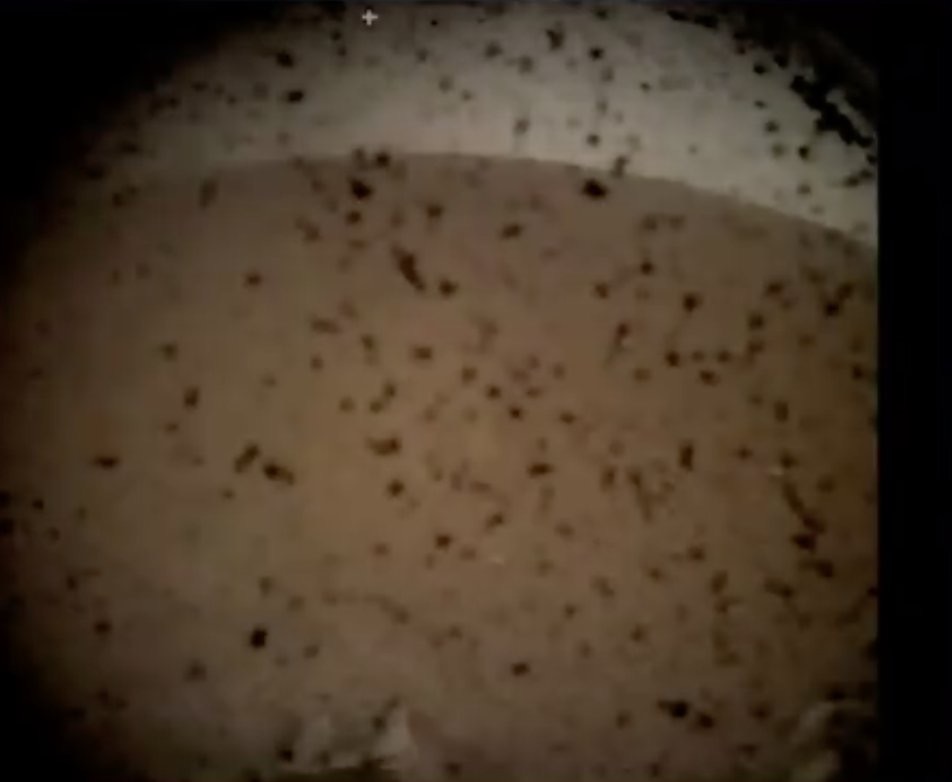
NASA’s InSight spacecraft has successfully landed on Mars, the space agency reported today. The lander touched down at 11:52:59 a.m. PST (2:52:59 p.m. EST). This is the first landing in six years, after the Curiosity rover landed in 2012. InSight, however, is not a rover – instead it will remain in one place and use its instruments to “peer down” into the deep Martian subsurface to study the planet’s origins and evolution.
“Today, we successfully landed on Mars for the eighth time in human history,” said NASA Administrator Jim Bridenstine. “InSight will study the interior of Mars and will teach us valuable science as we prepare to send astronauts to the Moon and later to Mars. This accomplishment represents the ingenuity of America and our international partners, and it serves as a testament to the dedication and perseverance of our team. The best of NASA is yet to come, and it is coming soon.”
The first image from the surface has already been sent back, showing dust on the lens cover (which will be removed later) and the horizon in the distance. More and better images will follow soon.
InSight – which stands for Interior Exploration using Seismic Investigations, Geodesy and Heat Transport – used rockets and a parachute to descend to the surface. Landing on Mars is not easy, however, and that goes for InSight as well. A lot of things could go wrong during the approximately seven minutes it takes a spacecraft to descend through the atmosphere – known as the “seven minutes of terror.”
“There’s a reason engineers call landing on Mars ‘seven minutes of terror,’” said Rob Grover, InSight’s entry, descent and landing (EDL) lead, based at NASA’s Jet Propulsion Laboratory in Pasadena, California. “We can’t joystick the landing, so we have to rely on the commands we pre-program into the spacecraft. We’ve spent years testing our plans, learning from other Mars landings and studying all the conditions Mars can throw at us.
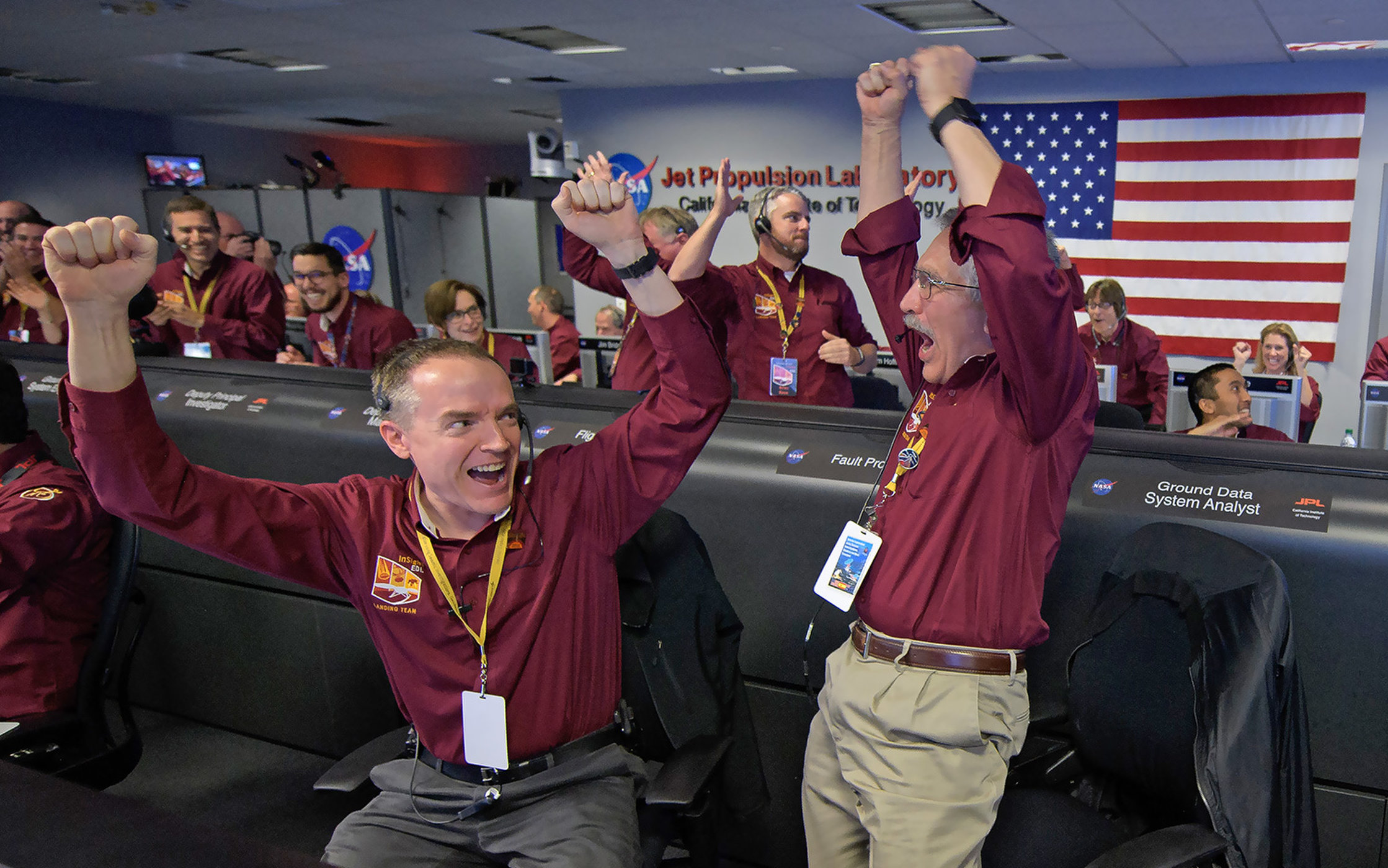
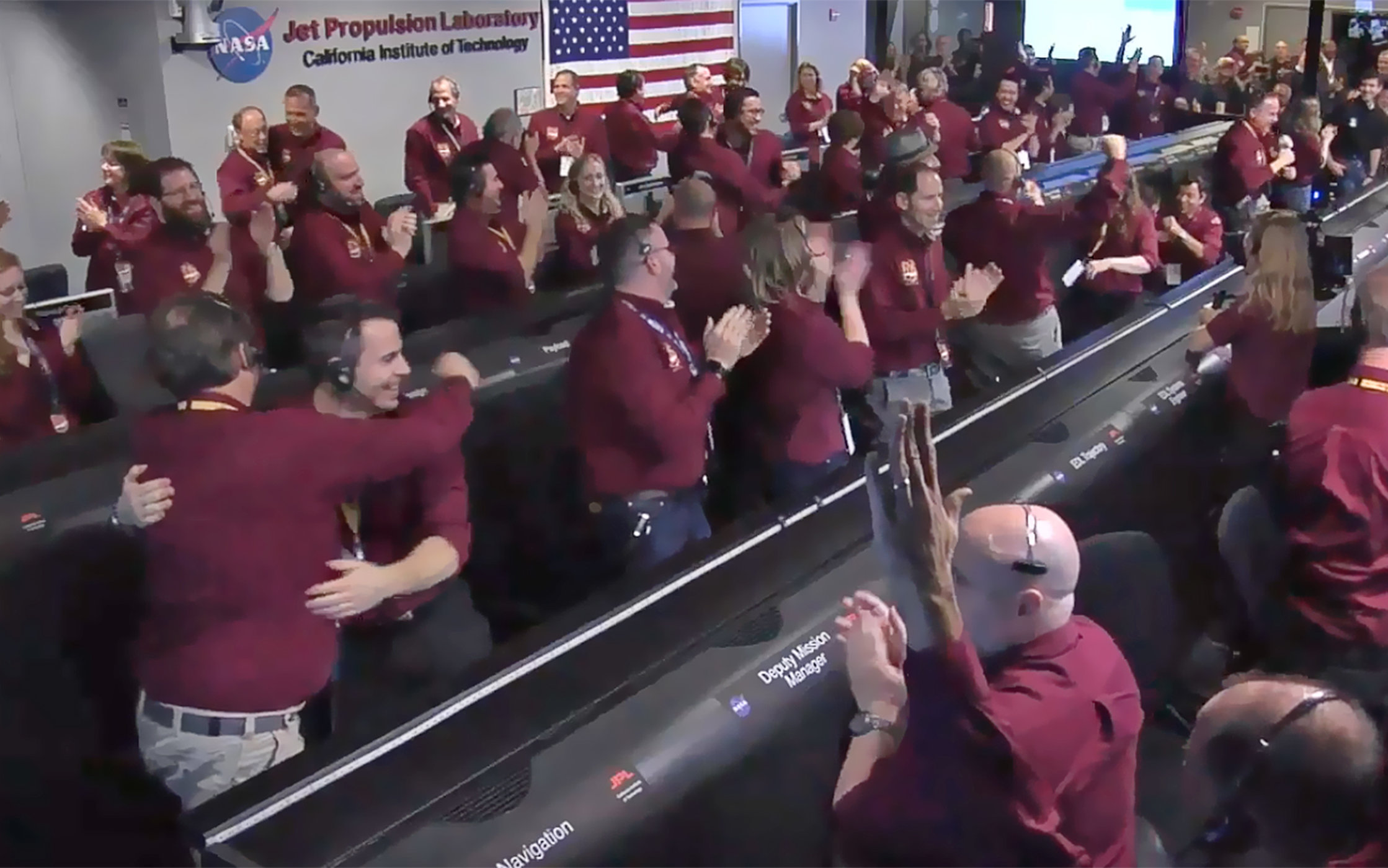
“We’ve studied Mars from orbit and from the surface since 1965, learning about its weather, atmosphere, geology and surface chemistry,” said Lori Glaze, acting director of the Planetary Science Division in NASA’s Science Mission Directorate. “Now we finally will explore inside Mars and deepen our understanding of our terrestrial neighbor as NASA prepares to send human explorers deeper into the Solar System.”
The landing completes a seven-month-long journey, during which InSight traveled 301,223,981 miles (484,773,006 kilometers) at a top speed of 6,200 mph (10,000 kph). InSight landed in a flat region in Elysium Planitia, a broad volcanic plain. The flat, albeit rather boring, terrain is necessary for the spacecraft to be able to use its radar and other instruments to look below the surface and measure the geological “heartbeat” of Mars. InSight will search for signs of current geological activity, such as volcanic activity or marsquakes, deep below the surface.
Now that the landing itself was a success, we will have to wait a few more hours until we know if the solar panels deployed properly.
“We are solar-powered, so getting the arrays out and operating is a big deal,” said Tom Hoffman at JPL. “With the arrays providing the energy we need to start the cool science operations, we are well on our way to thoroughly investigate what’s inside of Mars for the very first time.”
Just before InSight reached the top of the Martian atmosphere, it conducted a last trajectory correction maneuver to steer the spacecraft toward its entry location over Mars.
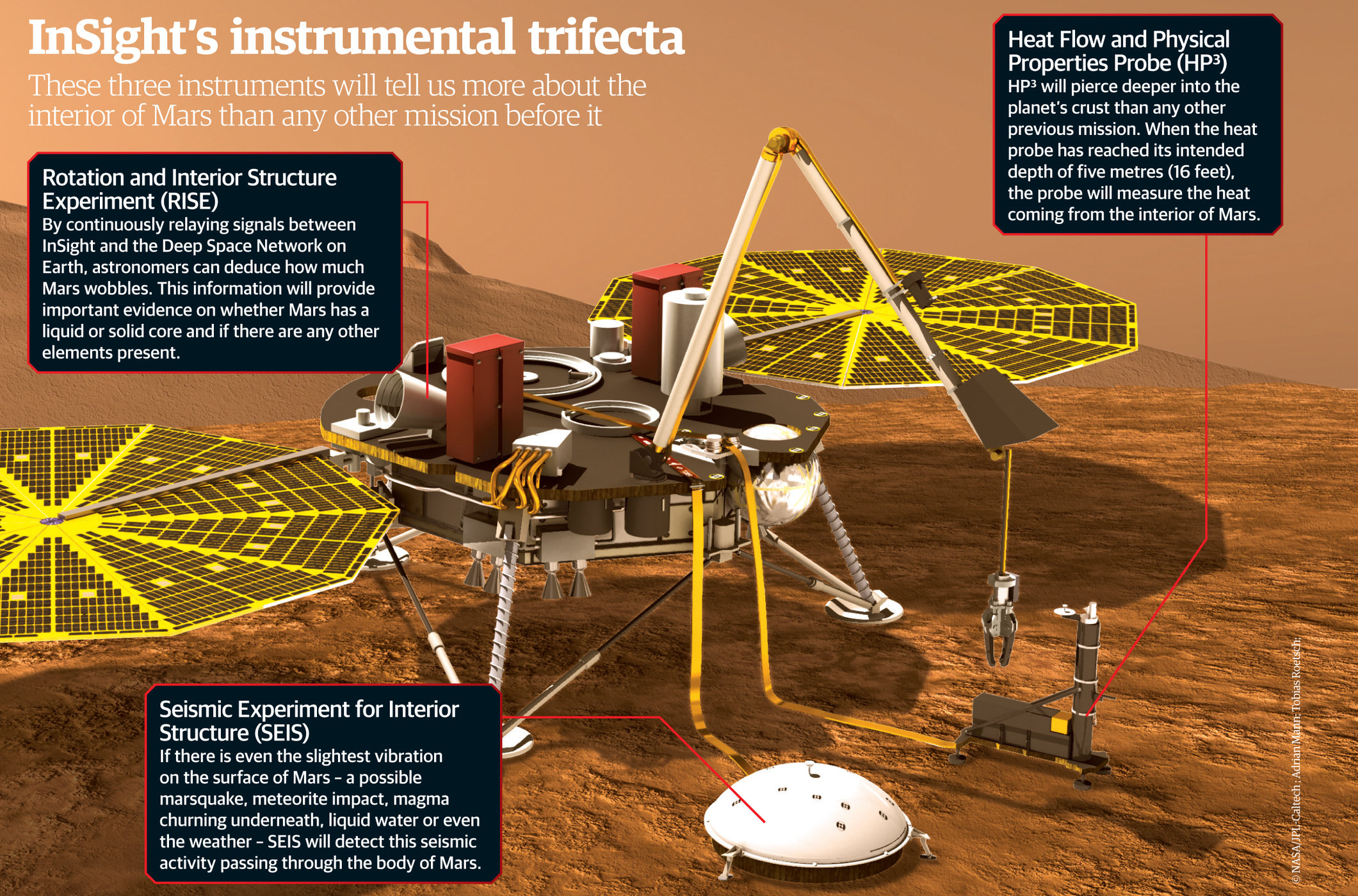
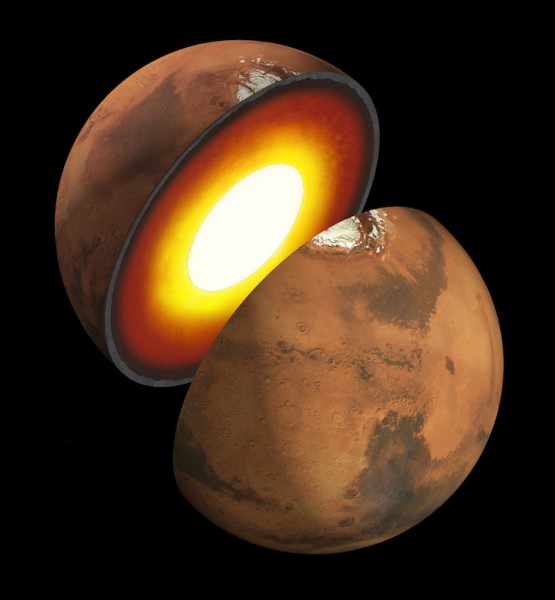
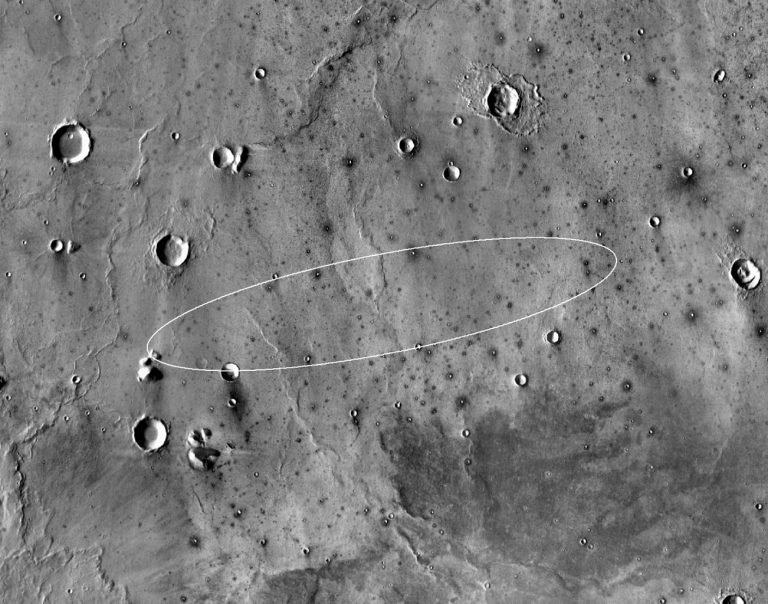
“While most of the country was enjoying Thanksgiving with their family and friends, the InSight team was busy making the final preparations for Monday’s landing,” said Hoffman. “Landing on Mars is difficult and takes a lot of personal sacrifices, such as missing the traditional Thanksgiving, but making InSight successful is well worth the extraordinary effort.”
“We hit the Martian atmosphere at 12,300 mph (19,800 kilometers per hour), and the whole sequence to touching down on the surface took only six-and-a-half minutes. During that short span of time, InSight had to autonomously perform dozens of operations and do them flawlessly — and by all indications that is exactly what our spacecraft did.”
Scientists will have to wait two to three months now for InSight’s robotic arm to set up the mission’s instruments on the surface, before the science observations can begin. After the final position of each instrument is decided, it will take several weeks to carefully lift each one and calibrate their measurements. In the meantime, engineers will monitor the environment and photograph the terrain around the lander.
“It’s taken more than a decade to bring InSight from a concept to a spacecraft approaching Mars – and even longer since I was first inspired to try to undertake this kind of mission,” said Bruce Banerdt of JPL, InSight’s principal investigator. “But even after landing, we’ll need to be patient for the science to begin.”
NASA’s twin MarCO spacecraft – two small CubeSats that accompanied InSight – also took a photo during the approach to Mars. The photo, from MarCO-B, shows portions of the spacecraft’s thermal blanket, high-gain antenna feed and high-gain antenna, with Mars in the distance as a small dot. The MarCOs are the first CubeSats to reach deep space, and are the first CubeSats to photograph Mars. Each CubeSat is only about the size of a briefcase. MarCO-B was approximately 310,000 miles (500,000 kilometers) away from Mars at the time.
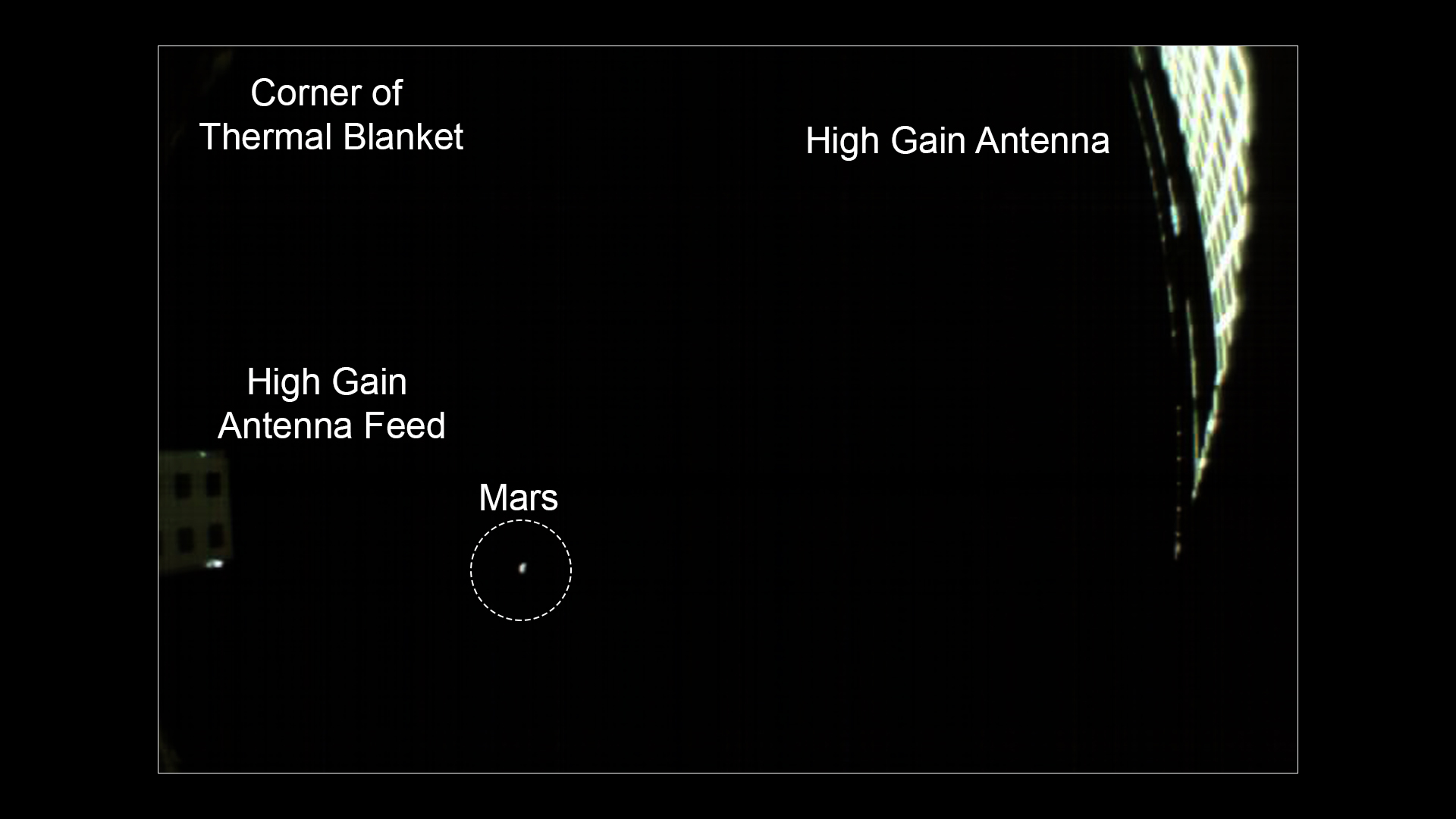
“MarCO is an experimental capability that has been added to the InSight mission, but is not needed for mission success,” said Jim Green, director of NASA’s planetary science division at the agency’s headquarters in Washington. “MarCO will fly independently to Mars.”
InSight’s mission is a unique one, to learn more about what is inside Mars instead of just what is on the surface; it will look at the planet’s “vital signs”: “pulse” (seismology), “temperature” (heat flow probe) and “reflexes” (precision tracking). InSight will study the size, thickness, density and overall structure of Mars’ core, mantle and crust, as well as the rate at which heat escapes from the planet’s interior. This will help answer long-standing questions and provide more clues as to how Mars has changed over time, from a once wetter world to the cold, mostly dry desert we see today.
“Every Mars landing is daunting, but now with InSight safely on the surface we get to do a unique kind of science on Mars,” said JPL director Michael Watkins. “The experimental MarCO CubeSats have also opened a new door to smaller planetary spacecraft. The success of these two unique missions is a tribute to the hundreds of talented engineers and scientists who put their genius and labor into making this a great day.”
InSight was launched on May 5, 2018, on a United Launch Alliance Atlas V “401” rocket from Vandenberg AFB, California.
More information about InSight is on the mission website.
FOLLOW AmericaSpace on Facebook and Twitter!




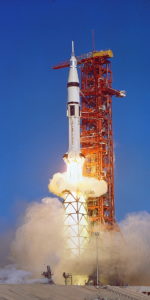

A HUGE congrats to all who made this a success. As the pictures come on, we can again say, “We never saw this before!”